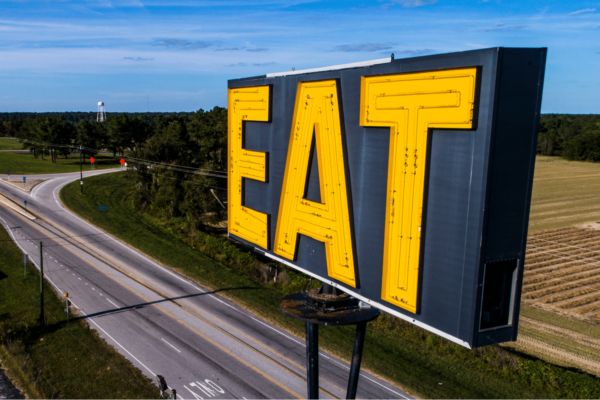COVID-19 has turned the world upside down for so many Americans, affecting how we work, where we live, and how and what we eat.
Even as more people receive vaccinations, it will be some time before we can even begin to experience what our “new normal” will look like, and restaurant owners need to be ready to re-capture customers once the pandemic is no longer a pressing concern. But how have those customers changed, both in where they live and what they want? Have the demographics in the area outside your restaurant’s windows shifted? And what will those customers, however diverse and different as they are, demand in terms of flavors and menu items?
Americans’ preferences shifted dramatically in the pandemic, and then will change again when we come out of it. And without the right tools, restaurant owners could be stuck with an old playbook in rapidly changing times.
The Pattern of Dual Migration
In 2018, a Datassential analysis of Census data revealed a pattern of Dual Migration, where the two largest generational groups in U.S. history, Baby Boomers and Millennials, moved in a similar pattern, flocking to cities’ outlying areas and close-in suburbs rich with amenities. The younger generation bought homes and started families, and seniors with disposable income settled in areas where they could enjoy a stable of diverse restaurants and other conveniences without the hassles and high prices of urban centers.
The analysis was critical in explaining how a majority of the population, however divergent in their tastes and preferences, would push the restaurant industry to a massive evolution of its own.
Datassential’s 2020 Dual Migration report revealed this trend stalled as COVID-19 spread and millions of Americans sheltered in place. While this alone may not be surprising, the report also uncovered new insights about where those groups, so vital to the restaurant industry, are going to end up, and what they’ll want when they get there.
Based on a comprehensive consumer survey conducted this fall, Datassential expects the pause in relocations seen throughout the pandemic to be temporary, allowing for a more normal migration pattern to resume once the threat of the pandemic subsides.
The restaurant industry will also surely look different when this time arrives.
Restaurants last year opened at just a quarter of the rate they did in 2019, but openings in the fast-casual segment are far outpacing their share of the overall restaurant market. Between March and October last year, fast-casual restaurants accounted for more than one in five, or 21.5 percent, of all newly opened restaurants. That’s nearly double fast-casual’s share of the restaurant industry overall; they account for 11.4 percent. All other segments slowed their openings during that time period (most significantly the casual-dining segment, which accounts for 26.9 percent of the industry but made up just 20.4 percent of new restaurant openings between spring and fall 2020.)
And before the pandemic is done, there will be a dramatic shift created by the sudden and widespread closure of restaurants. More of those closures will be in cities, where innovation most frequently begins. For example, in New York City, officials have estimated that one-third to one-half of its nearly 24,000 restaurants will close without major federal aid.
Datassential’s Firefly database found in late September that nearly one in 10 restaurants in urban centers were closed (as of Sept. 23) compared with 7.2 percent in the suburbs and 6.2 percent in rural areas.
And while there’s no assurance that a post-pandemic world will look similar to what it did before, it’s likely that restaurant trends will spread in a somewhat typical pattern, with most innovation occurring in city centers and working its way outward.
But hold on tight: This evolution of food trends is expected to speed up as we come out of the COVID crisis, due to pent-up demand from eager diners returning to restaurants, hoping to find unique menu items they feel they can’t get anywhere else.
In contrast to a typical trend cycle where trends are born and begin to gain traction in city centers, Datassential predicts that innovation will occur simultaneously in urban and suburban areas as the demand to lure returning customers with unique and exciting dishes heats up. Datassential’s Menu Adoption Cycle, which tracks flavors and dishes from “Inception” to Ubiquity” will also compress, meaning that rural areas and other places outside of cities and suburbs will see trends arrive faster in the early stages of post-COVID emergence.
How Restaurants Can Prepare
Current restaurateurs should think fast and outside the (literal) box: As fast-casual accelerates, it’s important to ensure a dining space has plenty of options for eating beyond a traditional dining room, whether that’s adding a drive-thru, providing ample takeout space or ensuring that delivery is as widely available and seamless as possible. These changes will attract pandemic-weary customers who are returning to a more normal dining experience but still crave speed and convenience.
For those considering new spaces, explore the areas where cities’ edges meet lively suburbs to capitalize on less expensive real estate and a potentially growing number of active, growing families or affluent seniors. Second-tier cities could also be a great option for new, innovative restaurants as food trends are forecast to transcend quicker from major cities through to rural areas.
As those food trends move through the Menu Adoption Cycle more quickly from Inception to Adoption, it’s going to be particularly important to ensure you’re catering to what your specific customers need and want, and that you’re ahead of the curve when trends evolve.
But how do you stay ahead of changing customers and tastes, especially when they seem to be changing at a breakneck pace that’s only expected to speed up?
Datassential’s Firefly database allows users to explore the restaurant landscape in any city or region, take a deep dive into statistics about area restaurants and businesses — complete with dense demographic data including average household income, median age, and a multitude of other valuable insights that enable you to measure the potential success of your menu within an ever-changing community.
Keeping on top of rapidly changing consumer trends will be vitally important as well, as some consumers settle into more permanent residences while others demand the most innovative and unique dishes to draw them out of their homes.
Datassential’s FLAVOR tool showcases consumer affinity for ingredients and the likelihood they will respond positively to certain flavor profiles, with statistics on dish popularity across all varieties of demographic groups and U.S. regions
By subscribing to Firefly and FLAVOR, you’ll be able access these important menu and demographic trends that are affecting your business, gain a much deeper understanding of how your menu, location(s) and overall brand, all while working to develop strategies to help you optimize your own unique business solutions.
For more information about Datassential’s suite of data or to get access to Firefly or FLAVOR, contact hello@datassential.com.







